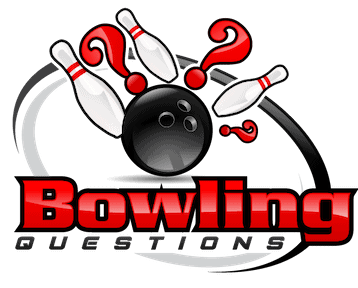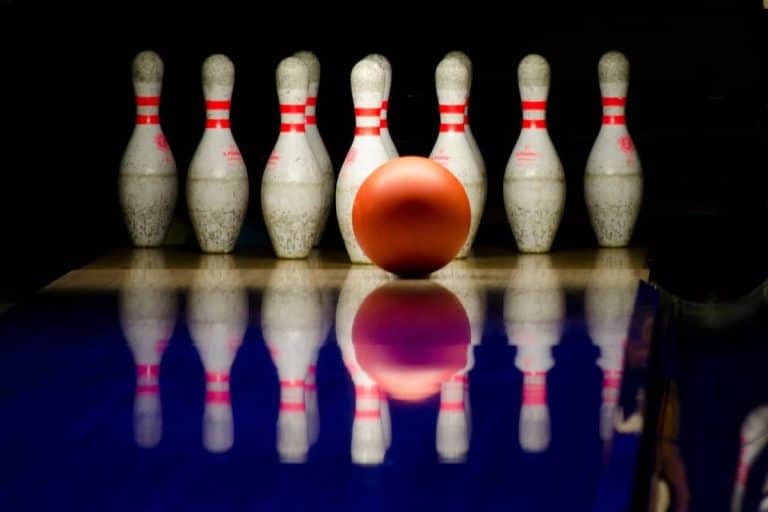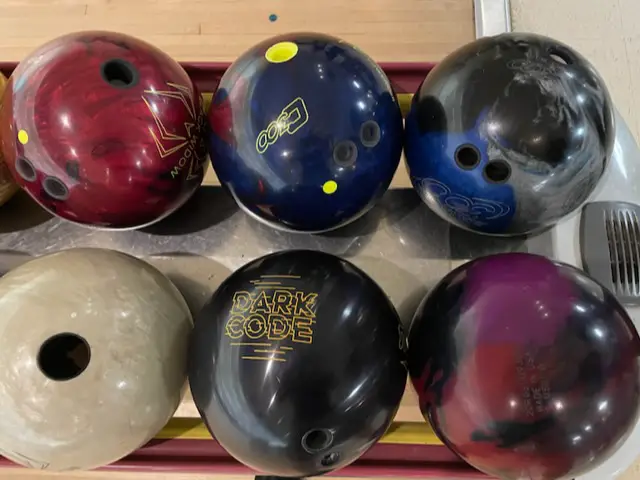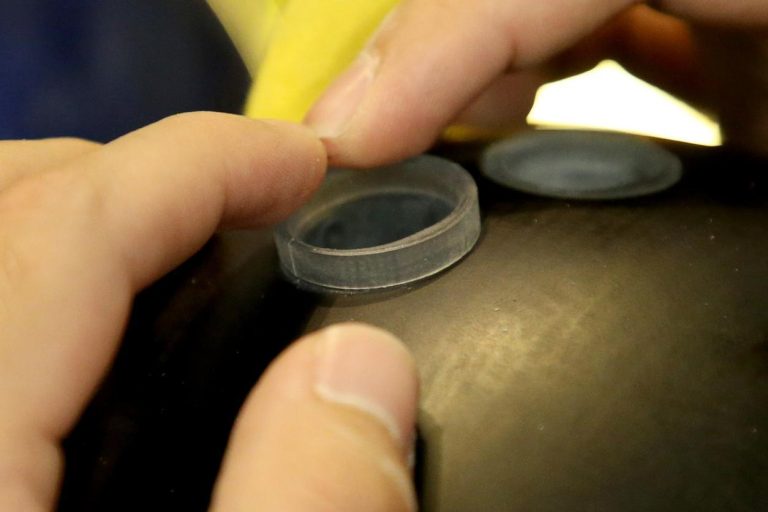Bowling Ball Curves too Much? Things you need to do
Curving or hooking the bowling ball is a common and highly sought-after technique for amateurs and professional bowlers. The sight of a perfectly curved throw smashing into the pins for a strike is always exciting and shows the skill and accuracy of the bowler.
When the ball curves too much, this can lead to inconsistency and the dreaded gutter ball! So to better understand why this happens and what you can do about it when it happens, we’re going to examine the how the why, and then why not of curving a bowling ball.
If your ball is curving too much and you can’t figure out why, here’s an in-depth look at the dynamics behind a curving ball and how you can fix it in your game.
Why would you want the ball to curve?
Adding the hook to your delivery dramatically increases the force with which the ball strikes the pins. This, in turn, significantly improves the chances of a strike. Being able to consistently deliver balls that curve at the right time and hit the optimum contact point on the pocket for a strike (1–3 for righties, 1–2 for lefties) will give you better scoring.
How and why a bowling ball curves or hooks.
There are several reasons why a bowling ball would hook. The three main reasons are the ball itself and how it could be set up to hook. The second is the technique of delivery, and the third is the lane conditions.
Let’s quickly look at the physics of the curve on a ball.
The Effect of Material On the Curve
One of the critical factors in bowling ball curves is the material the ball is made of. For a ball to turn, it needs to ‘grip’ the lane surface, and different materials grip the lane less or more depending on their makeup.
A particle ball would react even on fairly heavily oiled surfaces, while a plastic ball will often not grip, and these are used for spares.
Another factor with the ball is whether the ball has an offset weight block or has been drilled to encourage the ball to spin and curve more. Drilling the ball removes material, creating an ‘offset’ balance and would cause the ball to ‘wobble’ slightly in motion causing a gradual hook toward the pins.
Setting weights to achieve the curve best for you may take some time and experimentation at the alley. Most standard bowling balls are made for durability and so curving them is difficult.
At the pro level, specialist companies like Storm Bowling create a range of gear that precisely balanced and meticulously weight blocks to leverage the laws of physics to create more consistent and powerful hooks.
Bowling technique
The primary cause for the hook is the delivery technique of the bowler. To get the ball to curve, the bowler needs to impart spin on the ball upon release. The basics of release are to hold the ball as usual.
Then, just before release, pull your thumb out and run your fingers along the side of the ball to create the spin. While some players choose to have the fingers in with the thumb alongside the ball, this can lead to sprained wrists as the ball could quickly turn in your hand.
Lane oil conditions
Lane oil is a critical component of bowling as it protects the lane from burning and sparking due to the frictional forces at work. Every lane has an oil pattern that protects the wood and has a considerable impact on the speed and direction of your ball. There is a vast difference between the oil patterns for recreational and pro bowlers.
With professional bowling, the PBA has several oil patterns used, and each is different as the concentration of oil on the lane changes. Rule of thumb, more oil = less grip= less curve. Some bowlers like Parker Bohn III prefers to use the gutter style delivery, starting the ball on the outside of the lane, and then as the oil concentration is less on the outside, the ball curves into the pocket.
As the lane is used, the oil can dry up in certain areas, and this can lead to the ball hooking too soon or too much as it grips more on the surface without the oil there to create consistent friction throughout ball travel.
Let’s now at four ways you can reduce the curve on your bowling ball.
Understand the standard lane oil conditions at your alley.
Most alleys are set up to help recreational bowlers get more strikes and score better. The oil pattern has more oil in the middle, so if you throw straight and aim correctly, your ball should hit the pocket more often. If you’re looking to curve the ball, then the outside of the lane has less oil, and this will give your ball the chance to curve and hit the pocket.
Using this option may require a realignment of your aim and a bit of research around optimum aiming points for standard alley oil patterns. This solution is static, and while knowing more about the effect of the oil pattern will have an impact, the real factors involved are technique and the ball itself.
Knowing how the lane oil patterns are set at your preferred alley would be an excellent start to understanding how and where you need to aim and align to score. While the lane conditions need to be considered, don’t overthink or put too much into it.
Invest in your own ball
The house balls are not generally suitable for eliminating the curve problem as they would be designed to withstand heavy usage. The first step here is to buy your own ball. When it comes to weight, the rule is the ratio of 10:1; i.e., pick a ball that is one-tenth of your body weight. Often the issues around curving the ball too much can be caused by the ball weight. So if you weigh 160 pounds, then your ball weight is ideally 16.
Resin Or Urethane Coating
While expensive, balls with urethane or resin coating will make your hook shots much more effortless. This is because the material doesn’t absorb oil off the lane and have more friction than the standard house balls which are plastic. The resin coating digs into the lane oil, significantly improving the chances of you hitting your target. Those two factors combined are the key to success in your hook. If you are going to start taking your bowling much more seriously, this is a critical aspect of becoming a much better bowler.
Fingertip grips- the key to greater control
Most standard bowling balls are knuckle grips going up to the knuckle on the bowling hand. This can prevent your thumb from releasing from the ball before release and makes controlling the ball with the fingers more challenging.
To become consistent in your release and impart spin, you need to control the ball with your fingers, and the fingertip ball grip is the best way to do that.
Allowing your thumb and fingers to come out easier makes the action smoother and swifter than on a standard alley bowling ball.
Master the technique
Many bowlers think that they need to swing their arm across the body or force the spin from the wrist to hook the ball. This technique often leads to an uncontrollable hook or a ball that curves too much and inevitably ends up in the gutter.
As with any sport, having proper technique is critical to improving and maintaining your skill level, and very often, the cause of the ball curving too much can be a case of starting your technique from scratch and doing it right.
Proper bowling technique is like a pendulum swinging in a straight line, and side forces and rotation cause the hook and not by any movement from your wrist. If your ball is curving too much, you are likely using your wrist to try and generate the rotational forces needed and not your fingers.
Hand Technique for throwing a curve.
Without getting deep into the technical elements of delivery, here are the fundamentals of throwing a curve.
Using your fingertip grip, take the alignment and pick your target point. It’s far easier to aim at the arrows or the board than to aim at the pins as the arrows are closer and easier to line up than the pins themselves.
Keep your wrist strong and straight behind the ball as you would if you were going to throw a straight shot.
As you make your final step with your foot, your thumb should come out of the ball as your index and middle finger are the ones controlling the curve. This will transfer the weight of the ball to your fingers.
By removing your fingers to the side of the ball and using a sharp ‘flick’ motion along the side – clockwise for left-handers and counter-clockwise for right-handers, you create ‘lift’ and you more control of the shot while imparting more force to the ball.
Following through with the arm traveling straight toward the target, and should almost look like you’re offering a handshake! This is the perfect release as it results in the ball first traveling straight and then biting as the side rotation takes effect.
One of the most suggested ways to get a feel for the finger motion is to use the ‘underhand football throw’ technique. Get a football in your hand and then throw it underarm like the bowling action and impart spin using your fingers down the side of the ball to simulate the same movement in bowling.
You can also do the same with a tennis ball and watch it spin as it takes the first bounce. This is the same principle as the bowling ball biting into the lane oil.
Once you have got the technique down, head off to your alley and try it with a lighter ball. This can offer you a good idea of how the method is working while not putting the total weight of the ball on your hands and fingers.
Consider using a wrist brace
One of the significant causes of the uncontrollable or excessive bowling curve is the overuse or incorrect use of the wrist in delivery. A wrist brace would help maintain the proper wrist position on delivery and allow you to focus more on the use of the fingers in imparting the spin and rotation to the ball.
Since they are not expensive, a brace is most definitely an option to eliminate the possibility of poor wrist action. This would also help reduce the risk of injury while you perfect your curveball technique!
Modifying the ball by drilling or weighting.
With so many recreational or amateur bowlers looking to achieve the curve on their shots, professionals will often drill their ball on the right side (for a right-handed bowler), which causes the ball to lose mass on that side, making the left side heavier.
In motion, this imbalance will cause the ball to curve. However, doing this without proper technique can lead to the ball curving too much and have the opposite result in the shot.
If you are considering this route, consult your bowling pro and engage in a proper discussion to advise you based on your technique and the type of shape you want to have in your shots.
As of August 2020, the USBC eliminated the use of balance holes and ruled that up to five gripping holes can be drilled, but every hole must be used with each delivery.
When it comes to weighting or drilling the ball, there is no ‘one-size-fits-all solution, and this process usually involves some trial and error on your part to get the results you want.
Check your alignment
You may be releasing the ball from the wrong position to allow the ball to curve into the pocket effectively. Play around with your release position on the line and see if going wider or closer helps to reduce the excessive curve.
Remember that the oil patterns on the lane could well be drier on the outside and have more oil toward the middle, and the dry areas will cause the ball to curve much more.
So even though your technique could be good, the influence of the oil pattern could well be the culprit here.
Identify the cause of your ball curving too much.
A systematic analysis using the steps above would be the first place to start when looking to find the cause as to why your ball is curving too much.
The first place to start is with the ball. If you are using the alley balls, then this is probably the real reason that your shots are curving too much. Combined with the local alley oil patterns, you could be trying too hard to curve the ball using the incorrect technique.
Getting an understanding of your alley oil patterns can be done by consulting with the maintenance staff at the alley, and armed with this information, you can then take the following steps to source your ball.
Furthermore, you may find that the local pro could have some second-hand balls that would be suited to your weight and would cost less, to begin with. You can decide afterward that you want to invest in a higher quality ball that you can set up as you need it.
Aside from the alley and ball conditions, taking time to understand the physics of curving the ball and developing proper technique should be the core focus from now on. Once you have the proper grip, pre-shot set up, and release your curveball should become a thing of beauty!
https://en.wikipedia.org/wiki/Hook_(bowling)
https://www.wikihow.com/Curve-a-Bowling-Ball
https://www.bowlingball.com/BowlVersity/how-to-reduce-bowling-hook-on-dry-lanes






